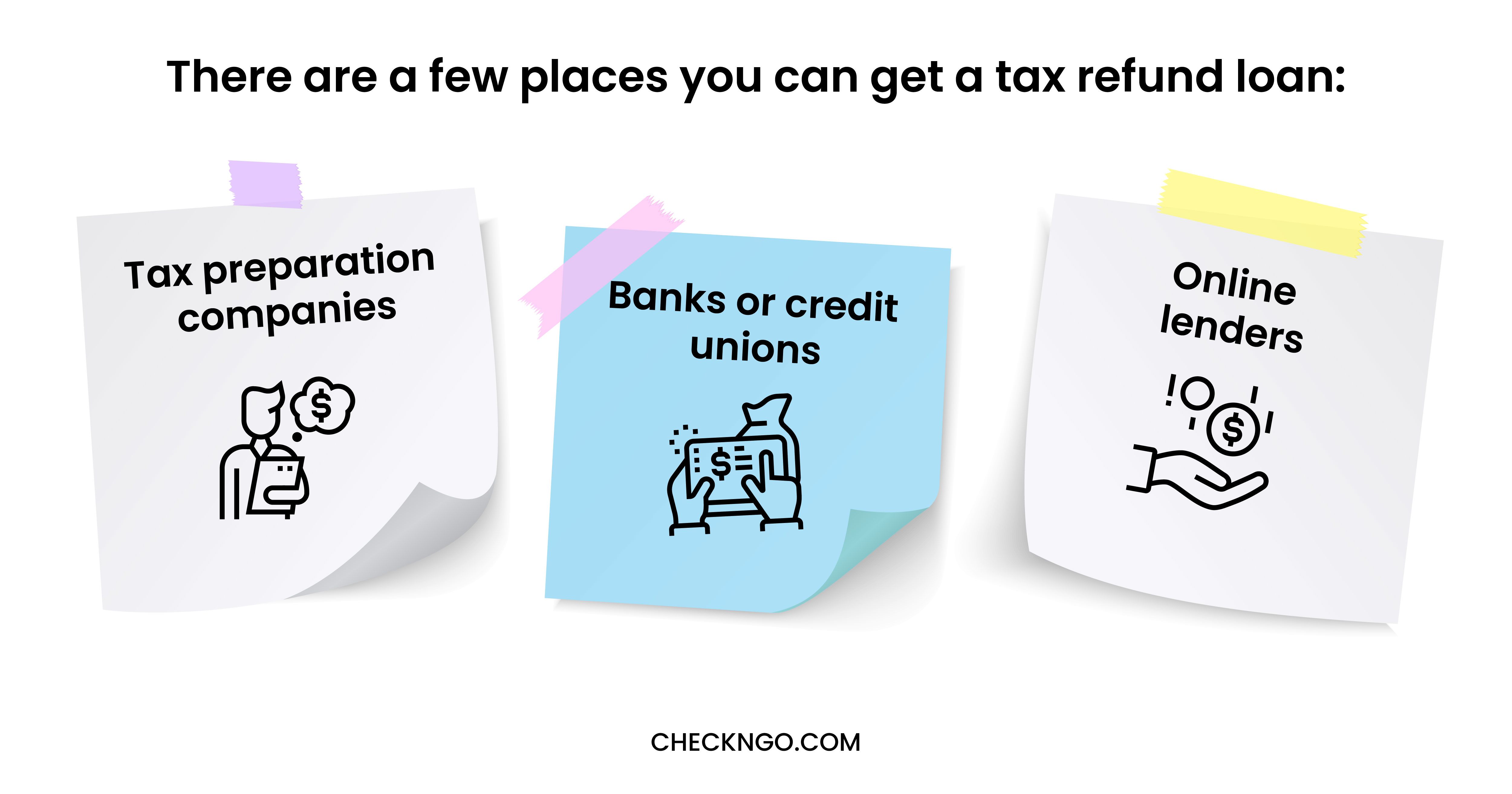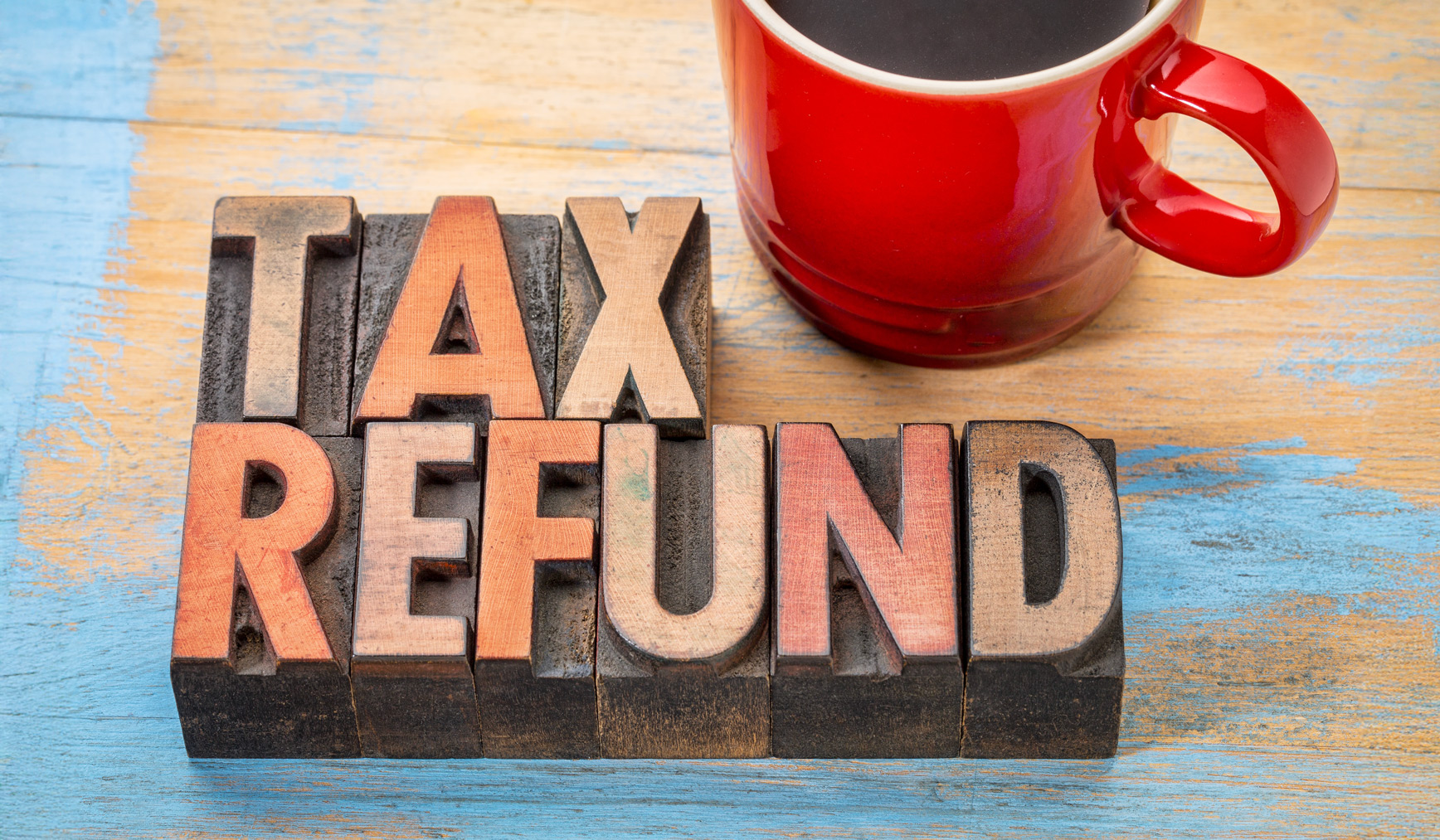Finance 101
Can I Get a Loan on my Tax Refund if I Already Filed?

You’ve filed your taxes—now what? Find out if it’s still possible to get a refund advance and what steps you can take next.
Filed your taxes and wondering if you can still get a loan on your refund? You’re not alone. A tax refund loan is money you borrow based on the amount you expect to get back from the IRS. People often use these loans to pay bills, cover unexpected expenses, or just get ahead while they wait. In this blog, we’ll talk about how these loans work, if you can still apply after filing, and what to think about before taking one out.

What are Tax Refund Loans?
Tax refund loans, also known as tax refund advances, are short-term loans tied to your expected tax refund. These loans give you access to money upfront, usually between $100 and $4,000, based on what the IRS is expected to return to you. Once your refund arrives, the loan is repaid from that amount. Most of these loans are available during tax season, from December through February.
- Tax preparation companies: These are often the most common sources. When you file your return through them, they may offer a refund advance. These loans sometimes come with little or no interest, but you may end up paying for tax prep services, which can be expensive.
- Banks or credit unions: Some financial institutions offer refund loans if you have your refund direct-deposited into one of their accounts. These loans might have lower fees but may be harder to qualify for without a solid banking history.
- Online lenders: These may offer fast approvals, but interest rates and fees can be higher. Be sure to read the terms closely.
- Show proof that you’ve filed your tax return
- Have a tax refund expected to arrive
- Meet minimum income requirements
- Pass a soft credit check (though some lenders don’t check credit at all)
- Be at least 18 years old with valid ID

Can You Get a Loan After Filing Your Taxes?
Yes, you can still get a loan after filing your taxes—as long as you’re expecting a refund and meet certain conditions. Many lenders and tax prep services allow you to apply for a loan once your return has been submitted, even if the IRS hasn’t issued your refund yet. However, there are a few things to keep in mind before moving forward.
- A completed and filed federal tax return
- Proof of an expected refund
- Valid identification and income documentation
- Sometimes, an agreement to have your refund direct-deposited into a specific account
- Your expected refund amount: If the refund is too small, you may not qualify.
- How you filed: If you used a tax-preparation service, you’re more likely to be offered a loan.
- Your credit: Some lenders may do a soft credit check, while others don’t check at all.
- Your income and debt: Lenders may look at your financial situation before approving the loan.
- High interest or fees: Even if a loan is advertised as “no interest,” other service fees can add up.
- Refund differences: If your actual refund is less than expected, you may still owe the full loan amount.
- Scams: Some offers may look real but are designed to trick you into giving up personal information or money.

Alternatives to Tax Refund Loans
- Personal loans: You may qualify for a small personal loan such as an installment loan from a bank, credit union, or online lender. These usually come with fixed interest rates and set repayment plans.
- Credit options: If you have a credit card with available balance, this can be a short-term solution. Just be sure to watch out for interest charges.
- Cash advances: Some credit cards offer cash advances, but they often come with higher fees and interest rates, so they’re best used carefully and only if necessary.
- Prioritize your spending: Cover the basics first—like food, housing, and utilities.
- Delay non-urgent purchases: Put off extras until your refund arrives.
- Use community resources: Local programs may offer short-term help with food or bills.
- Look for ways to bring in extra income: A side gig or part-time job can help you get through the wait.
The good news? The IRS usually issues refunds within 21 calendar days if you file electronically and choose direct deposit. In many cases, the money arrives even sooner. So while it might feel like a long wait, you could be just a few weeks away from having your refund in hand—no loan needed.
Tax Refund Loans Are Available if Needed
Editorial Policy: The information contained in Check `n Go’s Finance Academy Learning Center is for educational purposes only and is not legal advice. You should consult your own attorney or seek specific advice from a legal professional regarding any legal issues. Check `n Go does not act as a credit counseling, repair service, or debt consolidation service in providing this content. Please understand that Check `n Go policies change over time. Blog posts reflect Check `n Go policy at the time of writing. While maintained for your information, archived posts may not reflect current Check `n Go policy.
The information contained in our blog posts are the author’s own opinions, not those of Check `n Go or any other company. Any pros and cons are developed by our editorial team based on independent research. Some of the products, services, and offers on this page may not be available from Check `n Go. In Texas only: Check `n Go does not act as a credit services organization in providing this content.



